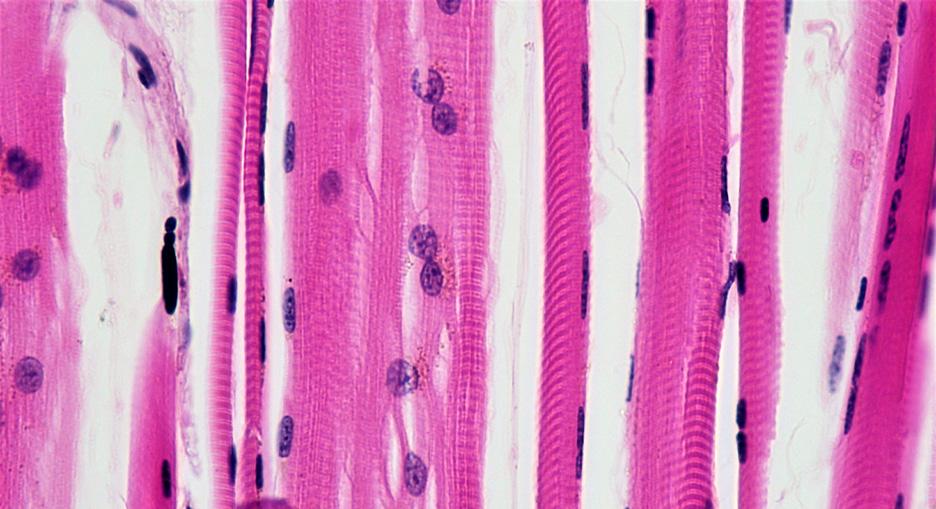
7 minute read
Toward a Synthetically Regenerative World Mina Nakatani
TOWARD A SYNTHETICALLY REGENERATIVE WORLD BY MINA NAKATANI

Advertisement
Everyone is familiar with the experience of dropping their phone—the all-too-relatable moment of fear that one will pick it up to find a spiderweb of cracks across the screen. We fear seeing our own possessions broken, whether that be through careless accidents or deterioration over time. This process of deterioration is intrinsic to many other man-made objects, ranging from the parts holding together a car or the internal metal beams bolstering bridges and skyscrapers. At some point, these structures will inevitably require replacement and maintenance. Although traditional engineering has worked to lengthen the life of such materials, biology offers new ideas for further improving their properties, one of which is the biological process of self-healing.
Typically, science and engineering have been focused on creating parts and products that can withstand damage, whether by the use of more intrinsically robust materials or through design informed by the evaluation of material properties.1,2 Biological systems, however, offer an elegant way to keep materials viable through the use of self-healing. In the body, self-healing is a ubiquitous process; a cut will seal itself with a blood clot allowing the skin to mend, and a broken bone will fuse back together after it fractures.3 Granted, these organic systems and tissues are inherently different from those typically used in engineering— on a chemical level, organic tissues rely on largely non-metal elements such as carbon and nitrogen, while building materials tend to utilize metals like iron and aluminum Figure 1: Materials like iron constitute most of the elemental content in support beams for large structures. Currently, no means of self-renewal for such materials/structures exist. (Fig 1).⁴ But even though the actual mechanisms of biological self-healing are rather complex, its general concept can still guide advancements in the development of synthetic materials.3
Self-healing, in terms of synthetic materials, refers to the ability of a material to return to its initial state with its original properties.⁵ Moreover, an ideal self-healing material would be able to carry out this process without any human intervention.3
It would be, for instance, as if the cracks on

a phone screen closed of their own accord, restoring the touch screen to its original state. Although such a material has not yet been designed, a similar phenomenon has been observed on a smaller scale with polymers. Polymers encompass a large range of compounds that make up various plastics and rubbers, among other materials. Structurally, polymers are similar to a beaded bracelet: a long chain of small, linked components, each contributing its own unique properties to the whole structure. Due to the many ways in which these components can be organized, polymers can be easily tuned to fit specific applications.⁴ Furthermore, some polymers have exhibited self-healing mechanisms, with cracks in pieces of stretched polypropylene (PP) or poly(methyl methacrylate) (PMMA) healing after being heated up, restoring the elastic properties of the original material (Fig. 2).⁵ This instance of a polymeric property is a promising indicator of the potential development of self-healing technologies.⁵
These observations have led to the synthesis of materials meant to heal themselves in response to cracks or tears. One such system utilizes tiny capsules embedded within a polymer such as poly(dimethyl siloxane), more widely known as silicone.⁶ These tiny capsules are filled with liquid silicone and a catalyst which, when mixed together, polymerize and harden.⁶ When the silicone polymer is torn, the capsules break and release their liquid components, filling in the gaps caused by the initial damage.⁶ As the cracks mend, most properties of the original material are restored, even over the course of multiple tests.⁶
However, not all polymers need capsules to self-heal. Instead, if self-healing is understood as merely the breaking and reforming of chemical bonds, then bonding mechanisms can be manipulated to create polymers that can repair themselves constantly.⁴ Take, for instance, a single bond connecting two sulfur atoms within a crosslinked polymer, constructs with additional linkages connecting polymeric chains together. This bond can be severed, splitting the original polymer in half.⁷ The polymer, however, is not necessarily beyond repair. Rather, the split polymer is akin to two sheets of Velcro that have been ripped apart; the two ends—analogous to our two sulfur atoms—may no longer be in contact, but they can be easily reattached by bringing the two Velcro strips back together. Reforming the sulfur-sulfur bond is conceptually similar: bringing the atoms into proximity results in a polymer chemically identical to its initial state, satisfying the basic requirements of self-healing. Of course, in practice this process is more complex—the sulfur-sulfur bond cannot reform in the presence of oxygen, and other similar processes may require manipulated environmental conditions in order to occur.⁷ Additionally, the two ends are not guaranteed to find each other quickly, in which case they will be unable to reform the cleaved bond.⁷ This problem can be

Figure 2: Rubbers such as polypropylene (PP) are considered polymers. The cracks in a large piece of rubber were found to seal themselves when heated, a basic form of self-healing.

solved, however, by adding different types of molecules with which the polymer ends can react and recombine. Such an addition increases the chance that two compatible atoms will meet, facilitating the self-healing process. ⁷
Coming full circle to their biology-inspired roots, self-healing polymers have also been used in the creation of artificial muscle fibers. In particular, polymeric materials have demonstrated their capacity to act in ways similar to titin, an important molecule in muscle fibers (Fig. 3).⁸ Titin has been studied due to its self-healing properties in muscles as they absorb energy and break down during physical exertion.⁸ In order to replicate this process, researchers have created crosslinked polymers containing bonds that are able to undergo cleavage and subsequent restoration.⁸ These bonds break when stretched—absorbing energy in the same way as titin—and subsequently repair themselves.⁸ The cycle is then repeated, in the same way that muscles are constantly being used.⁸ But while this particular type of polymer is still in the early stages of its development, its current abilities demonstrate a significant step forward in the creation of self-healing materials, putting synthetic materials closer to the functional scope of their organic counterparts.
Although self-healing materials are unlikely to become ubiquitous, they offer many possibilities for the development of stronger and more damage-resistant materials in the future. As self-healing materials continue to be developed, the lessons learned through their synthesis pave the way towards a future where dropping your phone no longer needs to be a terrifying prospect. REFERENCES
S., Olugebefola, S., Moore, J., &
Sottos, N. (2011). Self-healing polymers and composites. American
Scientist, 99(5), 392. https://doi. org/10.1511/2011.92.392
I. P. (2007). Self-healing polymer composites: Mimicking nature to enhance performance. Bioinspiration & Biomimetics, 2(1), P1–P9. https:// doi.org/10.1088/1748-3182/2/1/p01 healing Materials: Fundamentals,
Design Strategies, and Applications.
Hoboken: Wiley. materials research: What can we really learn from nature’s structural materials? Journal of The Royal Society
Interface, 4(15), 637–642. https://doi. org/10.1098/rsif.2007.0218 materials: A review. Soft Matter, 4(3), 400–418. https://doi.org/10.1039/ b711716g
Sottos, N. R. (2007). A self-healing poly(dimethyl siloxane) elastomer.
Advanced Functional Materials, 7. 8. 1. 2. 3. 4. Figure 3: Image of muscle fibers, the biological tissue in which titin plays an important role due to its ability to heal upon fiber stretching and
1.
2.
3.
4.
5.
6.
White, S., Blaiszik, B., Kramer, Trask, R. S., Williams, H. R., & Bond, Ghosh, S. K. (Ed.). (2009). SelfFratzl, P. (2007). Biomimetic Wool, R. P. (2008). Self-healing Keller, M. W., White, S. R., & 17(14), 2399–2404. https://doi.
breaking. org/10.1002/adfm.200700086 Diesendruck, C. E., Sottos, N. R., Moore, J. S., & White, S. R. (2015). Biomimetic self-healing. Angewandte Chemie International Edition, 54(36), 10428–10447. https://doi.org/10.1002/ anie.201500484 Liu, J., Tan, C. S. Y., Yu, Z., Lan, Y., Abell, C., & Scherman, O. A. (2017). Biomimetic supramolecular polymer networks exhibiting both toughness and self-recovery. Advanced Materials, 29(10), Article 1604951. https://doi. org/10.1002/adma.201604951
IMAGE REFERENCES
Banner: LunarSeaArt. (2017, April 6). A photograph of shatter glass [jpg image]. Pixabay, https://pixabay.com/ photos/broken-glass-shattered-glassbroken-2208593/ Figure 1: (2017, January 30). A photograph of bridge architecture [jpg image]. Pxhere, https://pxhere.com/ en/photo/587402 Figure 2: Hester, D. (2009, December 27). Cracked Rubber Texture [jpg image]. Flickr, https://www.flickr.com/ photos/grungetextures/4229336525 Figure 3: Berkshire Community College Bioscience Image Library. (2018, April 5). Cross section: teased skeletal muscle [jpg image]. Wikimedia Commons, https://commons. wikimedia.org/wiki/File:Muscle_ Tissue_Skeletal_Muscle_Fibers_ (41241952644).jpg










